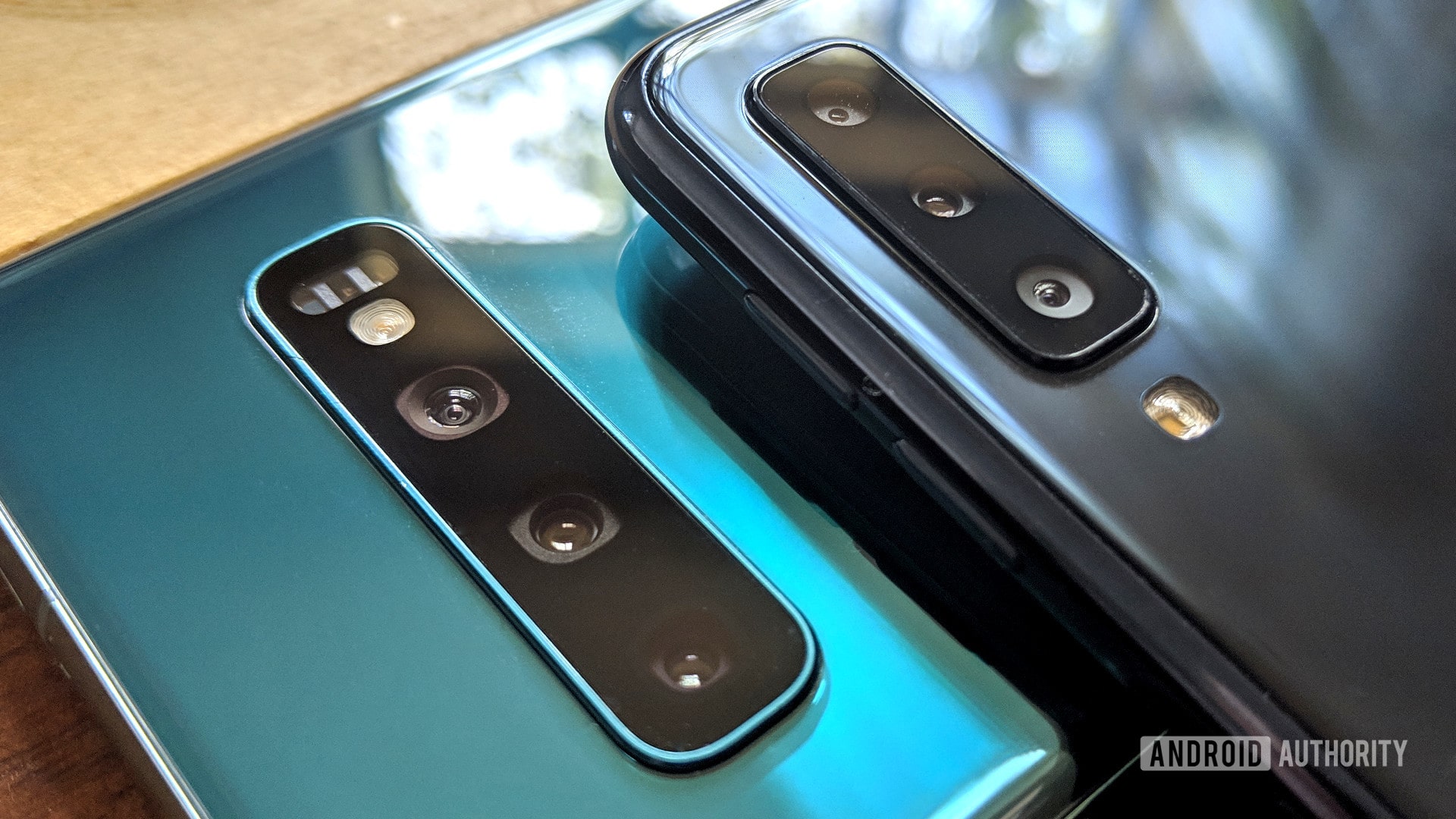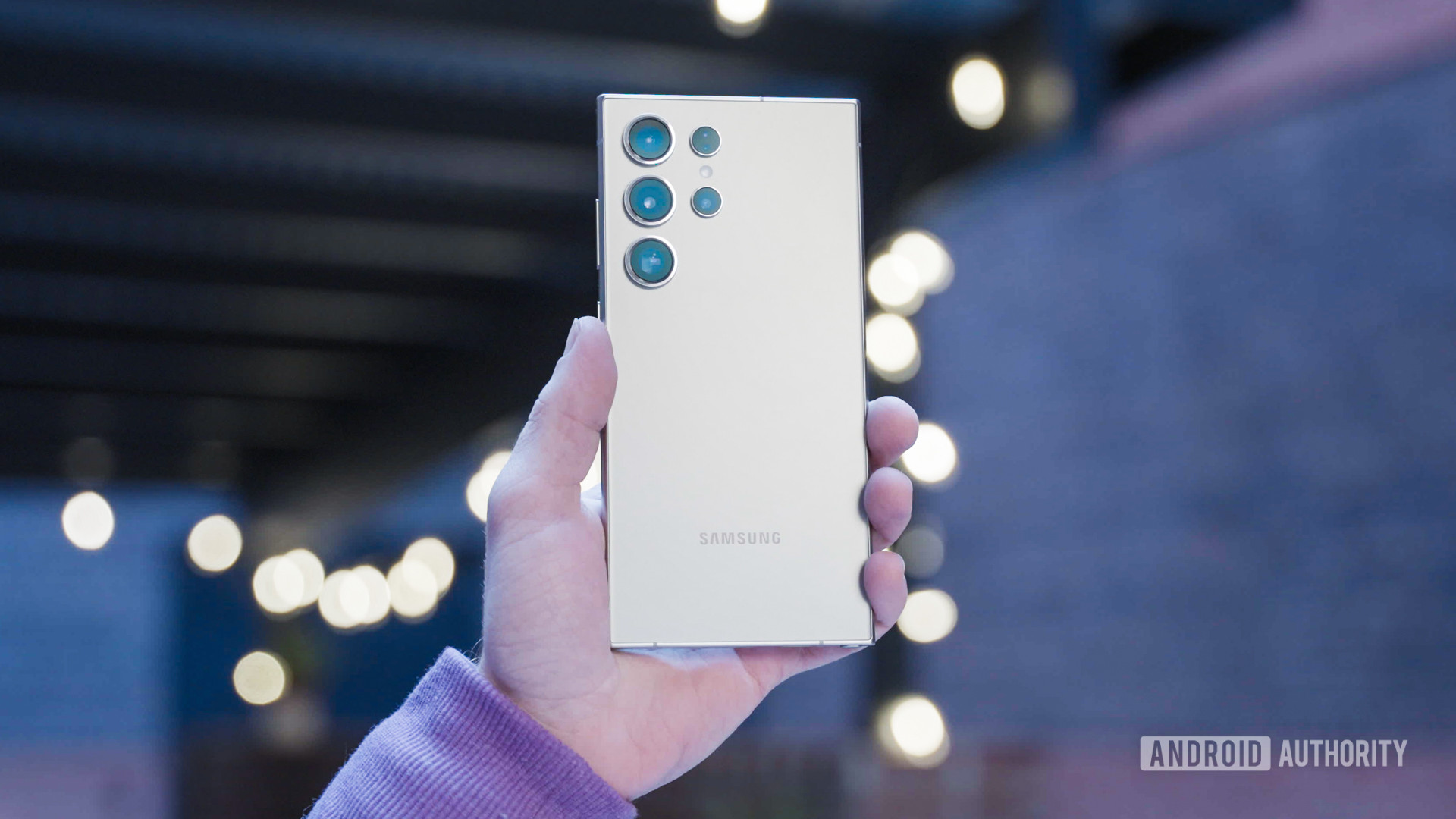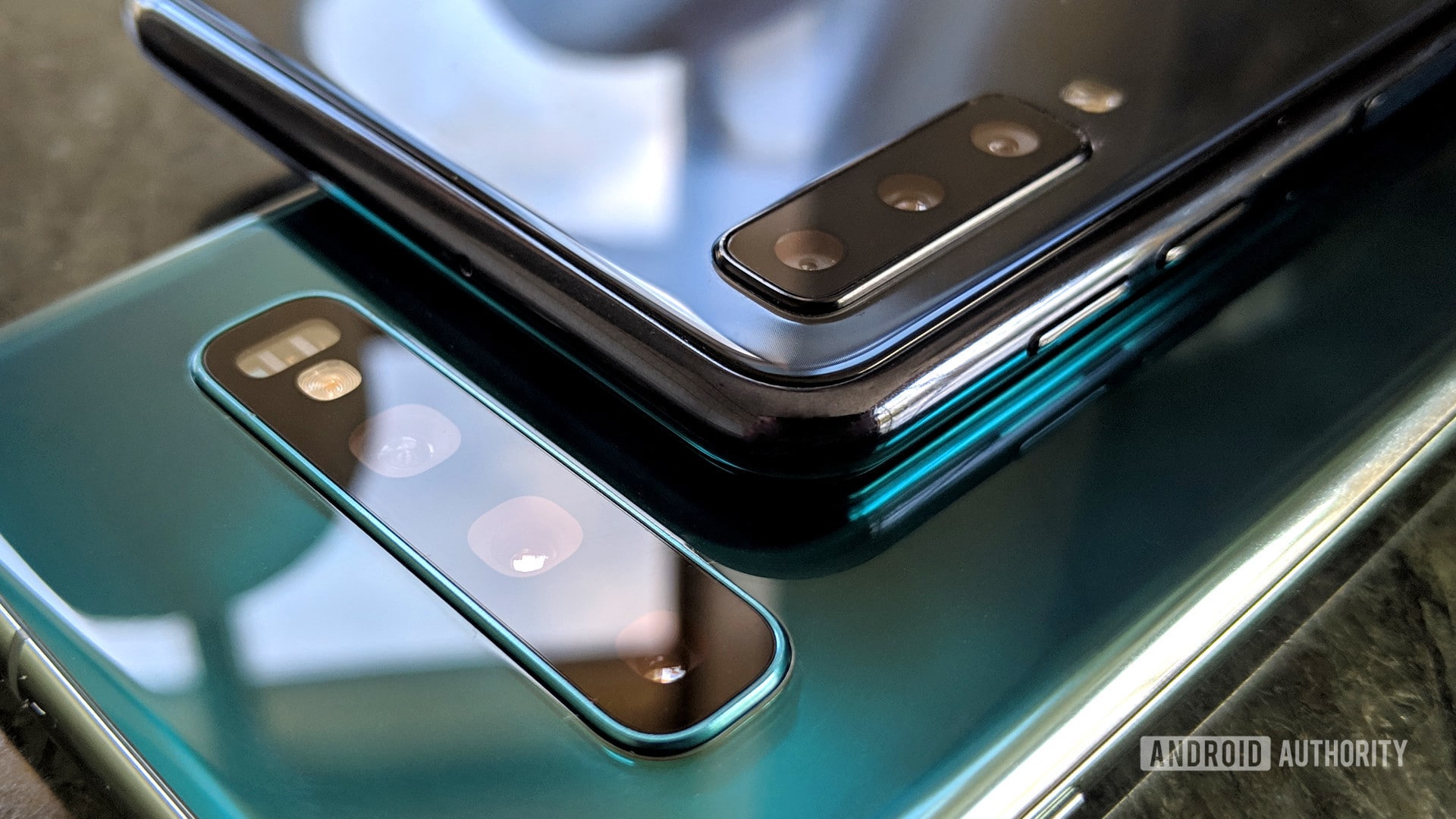Affiliate links on Android Authority may earn us a commission. Learn more.
$1,000 vs $300 smartphone camera: How do they compare?

The Samsung Galaxy S10 is one of, if not the best, all-around smartphone on the market right now. Part of the package is its triple camera setup, offering wide angle and zoom capabilities to bolster its shooting capabilities. But you need not spend a fortune for a triple camera smartphone. There are affordable mid-range options boasting similar capabilities. The question is what else do flagship camera packages do to justify their price tag.
Let’s dive into the differences between a $1000 and $300 smartphone camera.
At $899 the Galaxy S10 isn’t quite a grand, but it has the same rear camera configuration as the $999 Galaxy S10 Plus. As our affordable option, we have a late 2018 entry in the form of the Samsung Galaxy A7. You can currently grab one of these phones for just shy of $300 on Amazon. As both are built by Samsung, both are privy to the same camera expertise, software, and processing capabilities. A pretty fair shootout if you ask me.

We’re running both phones through a range of photography situations, including High Dynamic Range (HDR), low light, zoom, and wide-angle scenarios. Images have been compressed and cropped in the article for the sake of bandwidth, but you can find uncompressed images in this Google Drive folder.
Before we begin, a quick overview of the camera specification differences between the Galaxy A7 (2018) and the Galaxy S10.
| Samsung Galaxy S10 | Samsung Galaxy A7 (2018) | |
|---|---|---|
Main camera | Samsung Galaxy S10 12 megapixels f/1.5 - 2.4 switchable aperture 1.4um pixel size Dual Pixel PDAF and OIS | Samsung Galaxy A7 (2018) 24 megapixels f/1.7 aperture PDAF |
Second camera | Samsung Galaxy S10 2x zoom telephoto lens 12 megapixels f/2.4 aperture 1.0um pixel size OIS | Samsung Galaxy A7 (2018) Wide-angle lens 8 megapixels f/2.4 aperture |
Third camera | Samsung Galaxy S10 Wide-angle lens 16 megapixels f/2.2 aperture 1.0um pixel size | Samsung Galaxy A7 (2018) Depth sensor 5 megapixels f/2.2 aperture |
Detail, exposure, and color
We’ll start off with a selection of shots to give an overview of how each camera performs across a range of common shooting scenarios.
This well lit outdoor shot gives us a good overview of white balance, color saturation, and exposure. Both handsets do a very good job at detail capture along with an appropriate color palette. Although given the Galaxy A7’s larger 24MP sensor, we might have expected a bigger discrepancy in detail capture. This goes to show that sensor quality is just as important as megapixel count when it comes to picking out details.
There are a couple of key differences though. The Galaxy A7’s white balance is a little cooler. But that’s only a minor niggle. However, the scene is also a fraction overexposed, resulting in an over-brightening that flattens out some of the shadows.
We can see the same overexposure issue in this second image, particularly if you pay attention to the whites of the windowpane. The Galaxy A7 has also pumped up the colors even more than the Galaxy S10. Both handsets capture plenty of texture and detail in the daylight and keep noise to a minimum.
This final image reaffirms the most obvious differences between these two cameras. Again the Galaxy A7 is slightly more exposed and packs in a little more color saturation in the pinks and yellows. Meanwhile, the Galaxy S10 offers a better balance of light and dark, capturing plenty of shadow detail without overexposing the highlights in the upper right of the picture. Across all three of these pictures, there’s very little to complain about in either camera, providing that you like your colors punchy. However, the consistent overexposure on the A7 is a little bit of a concern.
In good lighting, there are only minor differences between our $300 and $1000 camera.
High Dynamic Range (HDR)
HDR is a very useful tool to bail out our smartphone cameras in tough shooting environments. Particularly when there’s a very bright background light or large contrasts between light and dark. Both of these Samsung Galaxy handsets boast an HDR option and both produce similarly excellent results.
Without HDR, the cactus is covered in shadow, making it impossible to discern the spines and textures. Both Galaxy handsets not only managed to pick out these small details but also bring out the blue in the sky. Again, there are minor differences in lighting, color, and depth-of-field, but the result is surprisingly close given the huge price differential. Bravo Galaxy A7.
Low-light performance
Low-light performance has historically been where lower cost handsets have lost out to their more expensive siblings and that’s sadly still the case with the Galaxy A7.
In this first example, the Galaxy A7 has a whole host of issues. Focusing is a major problem and the image is covered in noise that makes discerning any finer details almost impossible. Due to the lack of light, the camera also exhibits a much more subdued color palette.
The Galaxy S10 fairs better thanks to its wider camera aperture option, larger sensor pixels, and inclusion of optical image stabilization. Although, the result is far from perfect. Noise is a problem, albeit less so than the cheaper A7, and colors are also a little washed out. Even so, it’s a far brighter picture that looks passable given how little light was available in this scene.
The Samsung Galaxy S10 also incorporates a new Night mode shooting option, an idea borrowed from HUAWEI and Google. Samsung’s implementation sadly isn’t as good as its rivals, but it’s an extra feature that isn’t present on the Galaxy A7.
The results are poor for both phones in almost complete darkness, but the Galaxy S10 can at least pick out some of the details. In better lighting conditions, the Galaxy S10’s Night option works reasonably well at boosting exposure and colors, while reducing noise. Just make sure you hold your hands steady.
Low light performance continues to be the biggest issue for lower cost handsets.
Zooming in
When it comes to zooming in, high-end smartphones tend to plump for an extra telephoto lens with a fixed optical zoom. In the case of the Samsung Galaxy S10, this is set at 2x. Meanwhile, the Galaxy A7 2018 is stuck with just a digital zoom from its high-resolution main camera. This is an interesting comparison because we can see whether cropping a high-resolution image or using a fixed telephoto lens produces the best result.
This first example is taken at 2x in a less than ideal lighting situation. The text is clearly readable in the Galaxy S10 sample but has descended into a smudged, post-processed blur on the Galaxy A7. Likewise, the pages are much more sharply and clearly defined in the S10 image. Peeking into the shadowed part of the page reveals an even noisier and blurred image on the A7, owing to the denoise algorithm attempting to compensate for the low light. The S10, while a little noisy in the shadows, maintains much better clarity as it’s able to maximize its resolution and light capture with the telephoto lens.
The contrast in quality becomes even more noticeable at a 3x zoom. The heavy denoise and sharpening algorithms of the A7 smear the wooden barn textures and colors when zooming in, while the oversharpening produces a black halo effect around high-contrast leaf edges. The Galaxy S10’s telephoto lens, while also heavily processed in places, holds up reasonably well at 3x. The camera preserves small details in the paintwork, the dirt on the glass windows, and the plantlife retains most of its definition rather than looking like spaghetti.
At full frame on a small screen, the difference in zoom quality isn’t immediately obvious. But as soon as you blow your pictures up on a large screen or want to crop in, the Galaxy S10 is the superior zoomer.
Wide angles
When it comes to more flexible shooting options, lower cost smartphones are increasingly incorporating more features – including wide-angle cameras. At just 8 megapixels, the Galaxy A7 wide-angle camera is a little on the low-resolution side, especially compared to the 16MP sensor inside the Galaxy S10. You certainly won’t be cropping the image, but it will suffice for social media posts.
We can see that the Galaxy A7 camera isn’t quite as wide as the S10 either, reducing its utility somewhat. On the plus side, detail capture is surprisingly good, there’s no obvious lens distortion, and the cooler white balance looks very accurate in this scene. There definitely are problems with the S10 wide-angle camera, which suffers from obvious lens distortion and lack of clarity at the frame edges. Detail capture is also rather poor for a 16MP sensor, and the white balance is too warm.
Bokeh blur (portrait mode)
Bokeh blur is another feature that’s increasingly common in low-cost handsets. The Galaxy A7 aims to capitalize on this trend with a dedicated 5MP depth-sensing camera, a feature lacking on the Galaxy S10 series unless you stump up for the even pricier 5G model.
With a solid subject, both handsets do a great job at edge detection. There are no major errors with either camera in this first image. In terms of bokeh quality though, the Galaxy S10 is the winner. The Galaxy A7 produces a harsher blur effect rather than a soft depth-of-field style bokeh. We can probably chalk this up to the more advanced processing hardware inside the Galaxy S10 that’s able to run higher quality algorithms.
This second example shows that both cameras suffer from edge detection errors once we start introducing see-through subjects such as hair or glass. The Galaxy A7 struggles with the glass bulb on the left-hand side and fails to detect a depth difference with the background picture frame on the right. The Galaxy S10 has a similar problem perceiving the correct depth for the picture frame just behind the bulb, but the blurring artifacts are less noticeable.
Both cameras offer pretty good bokeh effects, but the Galaxy S10 wins in terms of quality. A dedicated depth-sensing camera is a great way to include bokeh effects when you have lower cost processing hardware onboard. But a dedicated camera doesn’t necessarily mean superior results.
Bokeh blur is yet to be perfected. Both phones give it a good shot, but the S10's algorithm produces a premium blur.

$1,000 vs $300 smartphone camera: the pros and cons
As the more expensive option, the Samsung Galaxy S10 clearly offers the better camera. However, it’s far from a night-and-day comparison in every test. In several cases, the cheaper handset punches well above its weight.
The Galaxy A7 offers 70 or so percent of the Galaxy S10’s quality in ideal lighting conditions. Although it has its share of compromises, mostly in terms of overexposure. The handset also successfully dabbles in wide-angle and bokeh effects with reasonably good results. It’s in low light that the more expensive Galaxy S10 image sensor, OIS, and higher quality lenses pull miles ahead. The addition of a 2x zoom camera also gives the S10 a decisive edge when shooting at a distance as well.
Our $300 smartphone is certainly capable of taking great-looking pictures and offerings some fun shooting options at the same time. At this price point, you’re never going to quite match the quality and capabilities of a high-end flagship, but the key takeaway is that a $1,000 phone camera is certainly not always 3x better than a $300 one.